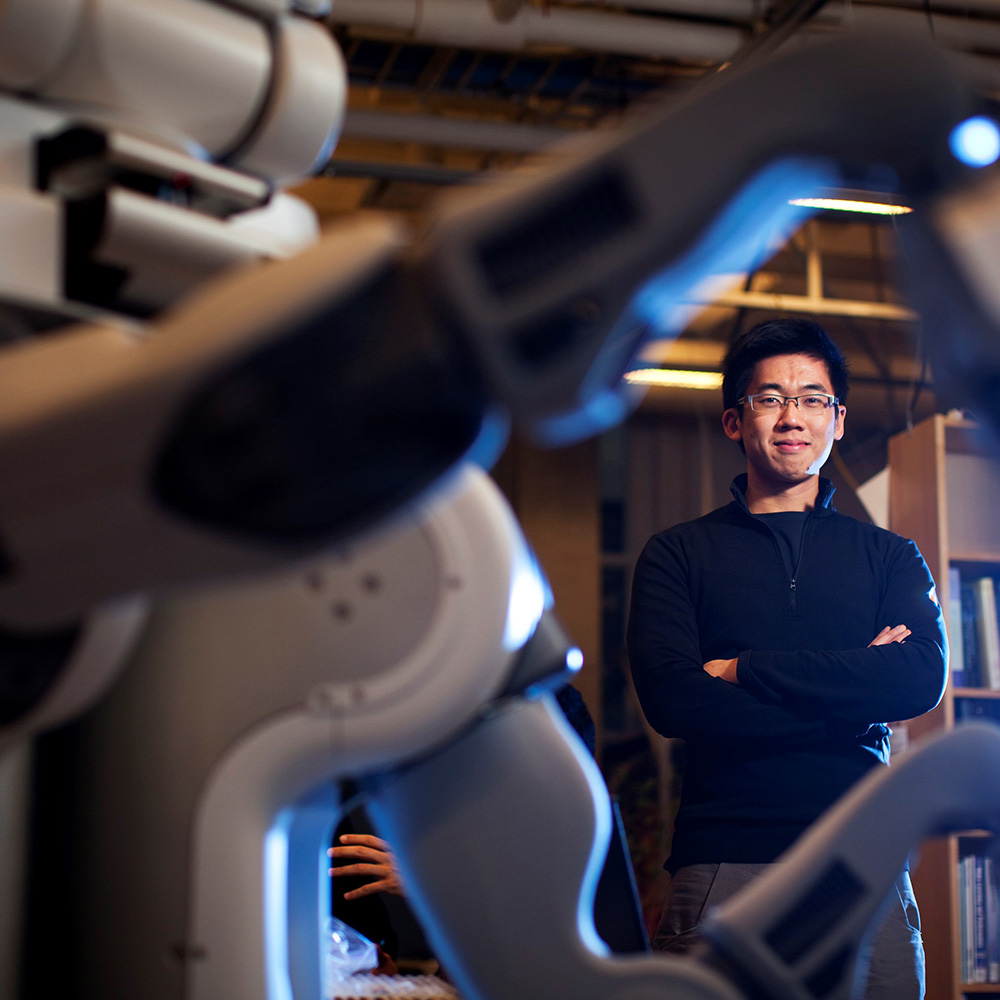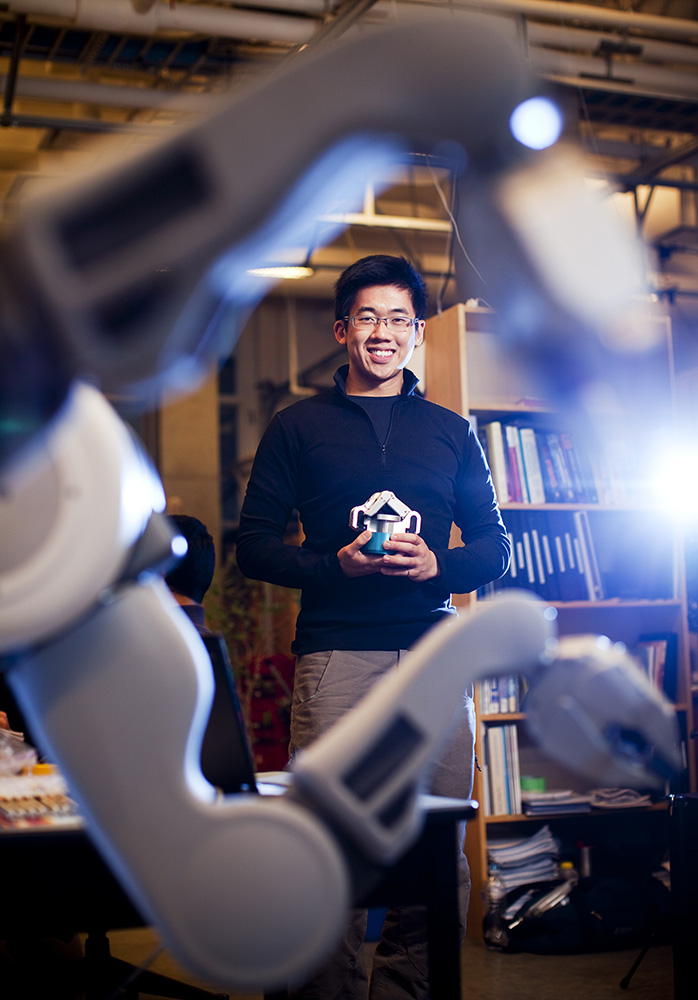Though in the popular imagination it may seem there is a divide between jobs performed by robots and those by humans, Matthew Pan envisions a more collaborative future.
Since completing his Bachelors of Mechatronics at the University of Waterloo, Pan has been testing the limits of what robots can accomplish.
“Robotics can be a powerful tool,” he says. “Not for just entertainment or manufacturing, but actually improving the lives of people in their day-to-day tasks. And I think it's that ability to create and build advanced things that drew me to engineering.”
As he begins his first semester as Assistant Professor in the Department of Electrical and Computer Engineering at Queen’s, Pan is excited at the prospect of teaching his own class. This will be his first position as a professor, though he has already accrued teaching laurels from his time at the University of British Columbia where he received the Killam Graduate Teaching Assistant Award for outstanding teaching.
“Teaching is one of those things I really enjoy,” says Pan. “It’ll take a little bit of getting used to, but ultimately I think it's a rewarding experience interacting with students, teaching them what I know and also learning from them.”
Pan says he chose to return to academia and pursue his research at Queen’s because of the excellent reputation of the Faculty of Engineering, as well as the opportunities to collaborate. He’s looking forward to working with Professor Keyvan Hashtrudi-Zaad and Ingenuity Labs’ Interim Director Joshua Marshall, among others.

"Matt's experience in the motion picture industry is unique and will serve him well as he launches his research program,” says Carlos Saavedra, Professor and Head of the Department of Electrical & Computer Engineering, “and it will also be valuable for his teaching and student project supervision in the years ahead."
Prior to coming to Queen’s, Pan completed a MASc and PhD in Mechanical Engineering, both at the University of British Columbia, before accepting a position working for Disney Research in Los Angeles. There, he worked on designing animatronics for guest-facing interactive experiences at Disney Parks and Resorts.
“Being able to work for Walt Disney Imagineering and Disney Research has really opened my eyes into the engineering and technology that goes into making ‘magic’ for guests in theme parks and resorts,” he says.
Pan describes one experience he worked on that involved a blend of virtual reality (VR) and robotics. A VR headset was used to simulate being in the Star Wars universe aboard a spaceship. The wearer reached out their hand, using their mind to will a lightsaber to come flying toward them. In the real world, a robot obliges the directive, delivering the prop to the guest’s hand. Although it never made it to the theme parks, the test was deemed a massive success internally and pushed the bounds of VR immersivity.
Hoping to continue the advancement of robotics in the entertainment field, Pan has been working with motion capturing and robotics researchers at Korea University in Seoul. The idea is to get motion data from an actor and put it into robots to capture the essence of a character through the robot’s motions.
Though much of his experience revolves around the entertainment sector, he also wants his research to extend into other major fields for robotics like manufacturing and healthcare. In manufacturing, he envisions a future where collaborative robots — or cobots — can aid the worker the way a surgical assistant aids a surgeon.
“[The robot] needs to be able to adapt to humans,” says Pan. “Then you have a really great human-robot teaming scenario where the robots are augmenting the human’s efficiency.”
In healthcare, he wants to make robots that can assist people, especially in the care of seniors. He believes robots can shoulder some of the burden by helping the elderly with simple tasks like moving from sitting to standing postures, retrieving objects, and helping them walk.
“These are all problems that are really interesting and are very necessary as the general population is starting to move into an age where they will need assistive devices and more advanced care. So I think robots are an excellent platform for advancing technologies in those areas where you can help an aging population.”
Pan ultimately wants to rewrite how humans and robots interact. He wants to create robots that can perform precision tasks and seamlessly work in tandem with humans. “I want to push that boundary,” he says. “And that's what excites me, being able to create technologies that will go into workplaces and homes, and will ultimately help people.”
